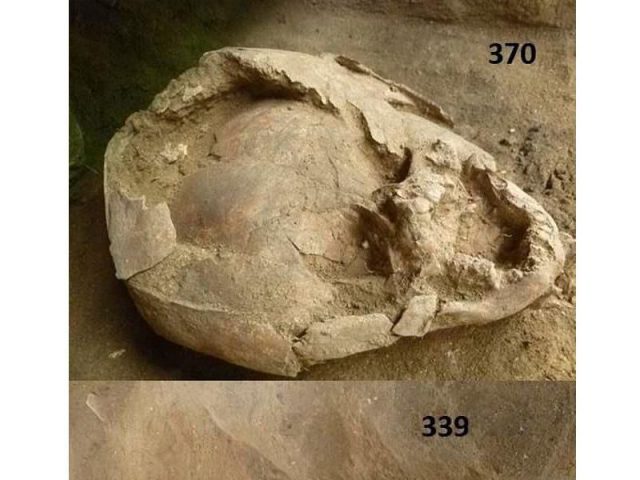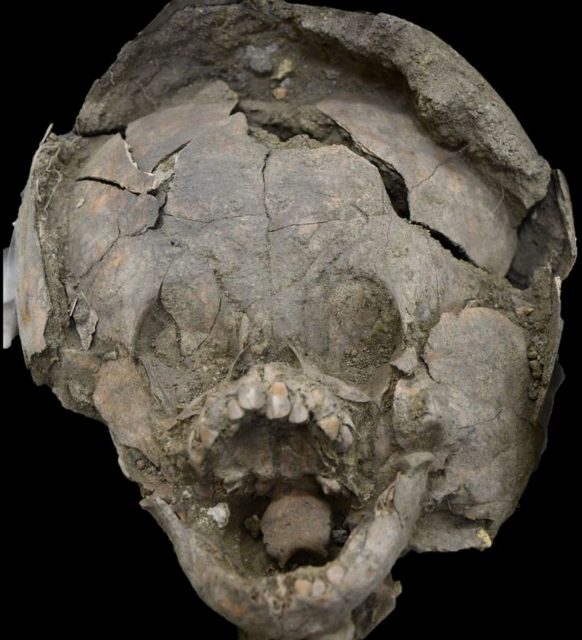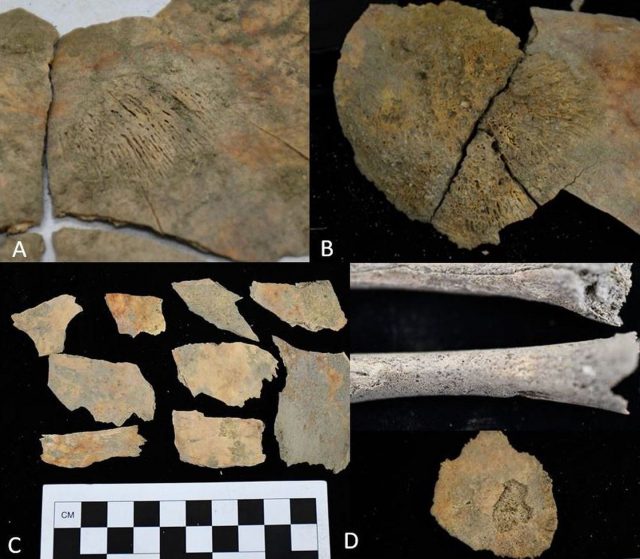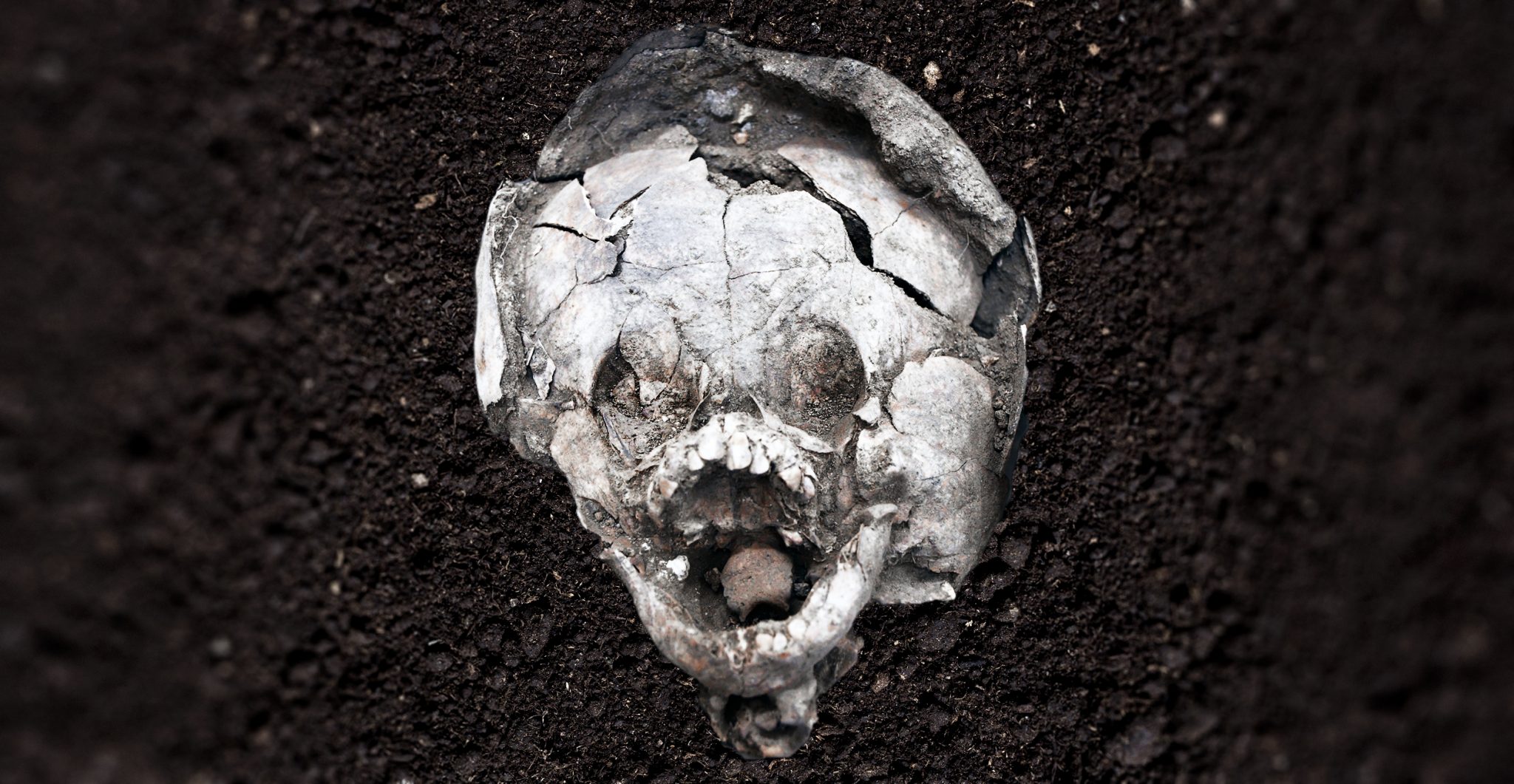In a particularly bizarre find, archaeologists have discovered the remains of infants wearing helmets made of other skulls. Ancient people who were without our understanding of science and medicine were forced to develop their own methods of understanding and coming to terms with death.
As a result, different cultures in different parts of the world have used a wide variety of funerary rituals over the millennia. When archaeologists come across the signs of such rituals, the scientists try to figure out the deeper meanings behind them and how they fit into the society as a whole.
Some of those rituals are fairly straightforward and well understood, such as burying the deceased with belongings or tools their loved ones think they will need in the afterlife. Other rituals can be a little less obvious.
Newsweek recently reported that one of those unusual burials was recently found along the central coast of Ecuador, where scientists uncovered the remains of two infants who had been laid to rest wearing ‘helmets’ made of the skulls of other children.

The babies remains were found at a ritual complex called Salango during excavations that had gone on between 2014 and 2016, according to a recent study published in the journal Latin American Antiquity. In addition to finding the infants, nine other bodies were also discovered.
Smithsonian.com noted that one set of remains seemed to belong to a child or about a year and a half, and the other infant was younger, no more than 6-9 months old. The skull placed on the head of the larger of the two babies belonged to a juvenile between 4-12 years old, and the one used for the smaller baby appears to have been from someone between 2-12. In the case of the larger et of remains, researchers found a fingerbone and a small shell tucked between the infant’s head and its odd headgear.

The author of the study said the find was unprecedented, no one has ever seen the skulls of juveniles used as ritual headwear. One of the reasons for that is because children’s skulls aren’t fully formed and fused together until they get older, which means that their skulls will usually fall apart, given enough time. The fact that it didn’t happen in this case strongly suggests that the helmet skulls very likely still had flesh on them when they were used.
The research team is still working out their theories about this particular funerary ritual. They’re currently conducting DNA and isotope analyses on the skulls to try to learn if the skull helmets came from relatives of the two babies. Even aside from the question of genetics, the researchers have several other theories about what it all may have meant.

For one thing, heads held an important place in pre-Columbian South American cultures. Images of heads figure prominently in many types of their art. Heads can represent one’s ancestors or power. They also are a show of dominance, as in taking the heads of one’s enemies.
The study suggests that the helmets may have been meant as a way of protecting the babies’ souls in the afterlife. Other infants were found in the group of remains, who weren’t wearing helmets, but did have small figures buried by their heads that might have been meant to serve the same purpose. Alternatively, if the helmets came from their ancestors, it’s possible the two infants wore them even prior to their deaths.
There is a volcano located very near the Salango site, and ash found where they were excavating suggests that the volcano was having a real impact on the environment at the time, probably negatively affecting agriculture, and causing fairly widespread malnutrition and starvation, which would have had the strongest impact on the very young and very old.
One expert who specializes in the remains of juveniles did say that their remains showed signs that they had been suffering from anemia when they were still alive.
It’s even been speculated that the children may have been part of some ritual whose goal was to appease the volcano and make it settle down, although that strikes the authors of the study as being less likely.
The simplest answer is that the helmets were put on the children as an extra layer of protection and support in the afterlife, in reaction to a natural disaster, such as the volcano’s activity. None of the remains show any sign of trauma, which would very likely be present if they were part of some sort of ritual sacrifice, and evidence suggests that they were probably very ill when they died.
Related Article: Largest Child Sacrifice Site Ever Found Discovered in Peru
As weird and, frankly, rather grotesque, as the helmets made of skulls are, they may have been an extension of their grieving families’ desire to ensure that they were as safe and well-equipped as possible as they moved on to whatever followed.
